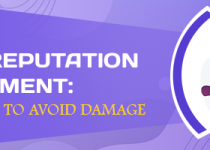30Jun 23 How To Optimize Your Google Ads Account: The Advanced Strategies

Google ads are considered to be one of the most important factors when it comes to online businesses of all scales and sizes. However, the regular updates and increase in automation have often made it difficult to balance between the traditional ways of investment and return of investment or ROI.’
You might have an updated website that incorporates a stunning landing page and attracts a booming audience, but when it comes to budgeting faster, you might end up lagging behind.
Now, if you can strategically implement the nitty gritty of Google Ads, you can bid goodbye to unnecessary stress, sit back and relax!
So before we proceed with the tips and tricks, know that a maximum number of newcomers in the online space are disappointed after their first Google ads campaign. Wondering why? Because they fail to optimize Google Ad account in the perfect manner.
Google Ads optimization can be a bit intimidating initially. But it is a lot easier than most think it to be. All you need is a bit of planning and correctly channelizing your methods while sticking to some of the best PPC practices.
* Google Ads Optimization Checklist
Several elements help you in Google ad optimization correctly; the most efficient part being your ad account.
Ads that are poorly structured can lead to innumerable obstacles such as low-quality scores, lack of reach, high expenditure, and ultimately fewer conversions. So to optimize it correctly, spend some time to properly structure all the parameters that shape up your Google ad account. Once you have correctly instrumented all the necessary elements that make up your Google paid services, you will be able to get started and reach your potential customers seamlessly with your informative ads.
Here are a few ways to accurately optimize your ad campaigns:
1. Channeling Your Google Ad Campaigns
When you are planning to launch your advertisement on several platforms, it is important to understand which channel is fetching the best results and also helping your ads to perform better in terms of your key performance indicator, or KPI.
Paid sites always play a key role to generate higher conversions. So before you decide to invest, take ample time to figure out what ad campaigns are best suited for you. Based on this research, you can allocate your budget accordingly.
With the advent of artificial technology, everything has evolved to a greater extent. Hence, there are a couple of useful tools that might help you to come up with valuable data points that are important for framing your Google ads.
- Conversion Action
When you are trying to optimize your Google ads account, towards a valuable and relevant set of data without mixing it with the innumerable other data available, you can seek the help of this easy and often underutilized tool. This will help you to gather similar conversations and allow you to keep a variety of goals in your business blueprint.
- Magnify Conversions
Several companies magnify their Google search terms’ cost per conversion by linking their CRM directly with their Google ads account to set up optimizing events.
By doing this you are allowing systems to get the exact data which will allow them to make smarter and more efficient bidding decisions. Henceforth, the extent of junk leads decreases considerably. This is perhaps the best way to increase conversions while minimizing unimportant leads.
- Smart Business Stats
The better data you incorporate into the systems, the more efficiently they will perform in terms of achieving your desired results. Also, several marketers are adding valuable business data to Google Analytics so that they can optimize their Google ads in a better way.
- Importing Offline Conversions
Once you have enhanced your conversions, try adjusting them. In doing so, you will be able to recapitulate the conversion value and either adjust it up or down accordingly.
At the same time, you can remove unnecessary data that doesn’t add any value to your Google ad campaigns. Google assumes all the data you feed it to be incremental. Therefore, if there are any complications regarding what you have actually asked Google to do, and what Google has done for you, you can easily trace back the steps and modify it correctly.
2. Branding And Allocating A Budget
Another important aspect of Google ads is to finalize and allocate a budget. These are usually dependent on heavy bidding as per your brand. Choosing suitable keywords is also important when it comes to allocating a budget.
The best way to have full control over your Google ads is by implementing a Single Keyword Ad Group or (SKAGs).
SKAGs has this unique feature that allows you to modify the PPC campaigns so that you always have the upper hand over every aspect of your Google Ads.
Now how to implement SKAGs in your Google ads strategy? It is simple and basic. Choose a keyword and set it up on each of your ad group campaigns. Once done, make it a set of advertisements where the keyword gets featured on the headline for a minimum of one time.
When you incorporate 10-12 keywords into your ad, this will lead to a variety of higher searches and finally trigger the actual keyword.
SKAGs give you a ratio keyword to ads on a basis of 1:1. Thereafter, you can use your desired keyword at least once on the headline, making it relevant for the users too.
To have an advanced keyword strategy, make sure to incorporate these basic ideas in your approach:
- Finding long-tailed keywords with the help of Google’s Keyword Planner
- Minimizing the irrelevant clicks by figuring out the negative keywords that are directly impacting your CTRs
- Updating your keyword list with the help of Google’s search term reports and figuring out the exact keywords that are being used by the customers before they searched and clicked on your ad
- Discarding all the unnecessary keywords that are adding zero or no value to your ads
- Come up with advanced keywords and see which keyword has better control over your ads
3. Using RLSAs to Target Audience
RLSAs or Remaking List for Search Ads is a Google component that lets you remarket the audience list targeting the ones sitting right at the top of each of your search Google ad campaigns.
Several marketers are unaware of the concept of remarketing or retargeting lists that lets you add a variety of other layers other than just displaying the ads. When you finally figure out the remarketing list, you can segregate the top-layered audiences from the ones who have already visited your site. Thus, you are opening yourself up to new opportunities while narrowing down the keyword traffic.
At the same time, this gives you an edge to be more flexible by broadening the list of keywords. When you are implementing RLSAs into your Google ads strategy, you are telling Google what exactly it needs to incorporate into the ads. Thus people will be able to view your ads by inserting the right set of keywords. This in turn will lead your business to come to the forefront of your target market.
Here are a few tips on how to test out the best RLSAs:
- Ensuring your remarketing list is on the bigger side
Having at least 5000-10,000 members is considered to be better when you decide to target your audience. So if you want to build up a large audience size, make the remarketing list with a large window of 30 days or more.
- Making duplicates of the existing campaigns to test the best RLSAs
While testing RLSAs you need to ensure that they are running alongside your ads and not in place of them. Figure out the most efficient RLSAs and run those copies for the best results.
- Excluding the non RLSAs
To direct the remarketing traffic to your RLSAs directly, discard all the existing RLSAs campaigns to avoid competing with yourself.
4. Taking Care Of Your CPCs
To get the most out of all your Google ads campaigns, prevent runaway CPCs. These can blow up your entire ad account and the consequences can usually go south.
You can take care of this by setting up a maximum and a minimum bid for each of your portfolio strategies.
This will eliminate the useless elements and allow you to have a good conversion rate.
5. Speed Up Machine Learning
Machine learning is a good aspect when it comes to optimizing Google ads. There are innumerable modern aspects to minimize the time in learning and maximize optimization. Therefore, if you are a marketer, all you have to do is minimize the fragmentation and divide it into those exact parameters where it is necessary and justified.
At the same time, you can incorporate certain keywords, and then combine them with the audience and the data for maximum results. This leads to both passive and active targeting of keywords and finally, you end up getting better results.
A number of marketers also state that incorporating good, proficient ad copies and not AI-generated texts will allow the machines to have a better understanding of the output you truly want.
6. Observe The Audience
Every marketer must understand that they are trying to target the people and not just the keywords. Therefore it is important that the audience tools are used in a more effective manner. The best way to do this is by using the GA4.
GA4 has this amazing feature where you can understand which customers are going to return back to your website in a period of seven days. A number of marketers also create different segments based on audience needs and thus solve all the discrepancies successfully.
7. Multigroup Ad Group Testing
If you are working on small accounts, make sure that you are using all the variants and patterns that can help you to fetch the best results. Use a number of variations and look for different patterns on your website to achieve this outcome.
This will give you a significant idea and also help you to master the various leanings that are available. Multi-group testing can be wonderful only if you are clear about the assets and understand the combination it needs to generate the best results.
8. Google Ad Optimization Hacks
If you have a lower bandwidth, a subsidiary budget, and you are looking out for simpler ways to optimize Google ads, here’s what you need to do:
- Get rid of all the unnecessary things, and only choose those that are beneficial to your Google ads strategy
- Use modern tools that enable you to identify the ads that can fetch more conversions
- Use Google Analytics to understand which audiences are most likely to get converted, and which won’t
A few brownie points for you:
It is a basic human tendency to forget what happened a week ago, let alone be it seven months. Therefore, whenever you are making a change always remember to label the changes with a different color so that you are able to understand the exact changes you have made to your Google Ad Campaign.
On the other hand, it will also enable you to have a basic understanding of the data and help you to know whether to implement it, discard it, or modify it!
Wrapping up:
If you want the best results from your Google Ads campaigns, optimizing them with the right methods, precise keywords, and for the correct target audience is absolutely crucial.
You need both conventional as well as innovative methods to get the best return on investment. Now, if you want professional assistance in taking your brand’s message to your target audience and converting a consistent number of leads through your Google ad campaigns, you need the help of the best virtual assistance firm Use Per Wish.
The Web Development & Internet Marketing Team at UPW has decades of experience in working with several businesses and industries, across the globe. Therefore, we have the right knowledge and expertise to not just take your brand organically to the right audience but also help you achieve the best ROI.
So, contact us today to master the art and effectiveness of Google ad campaign optimization!


